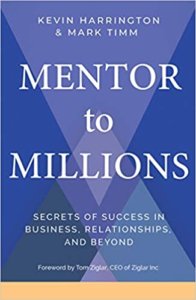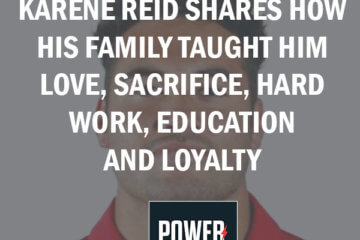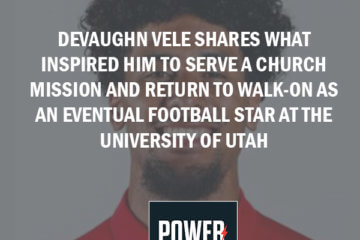Listen to the Podcast Here:
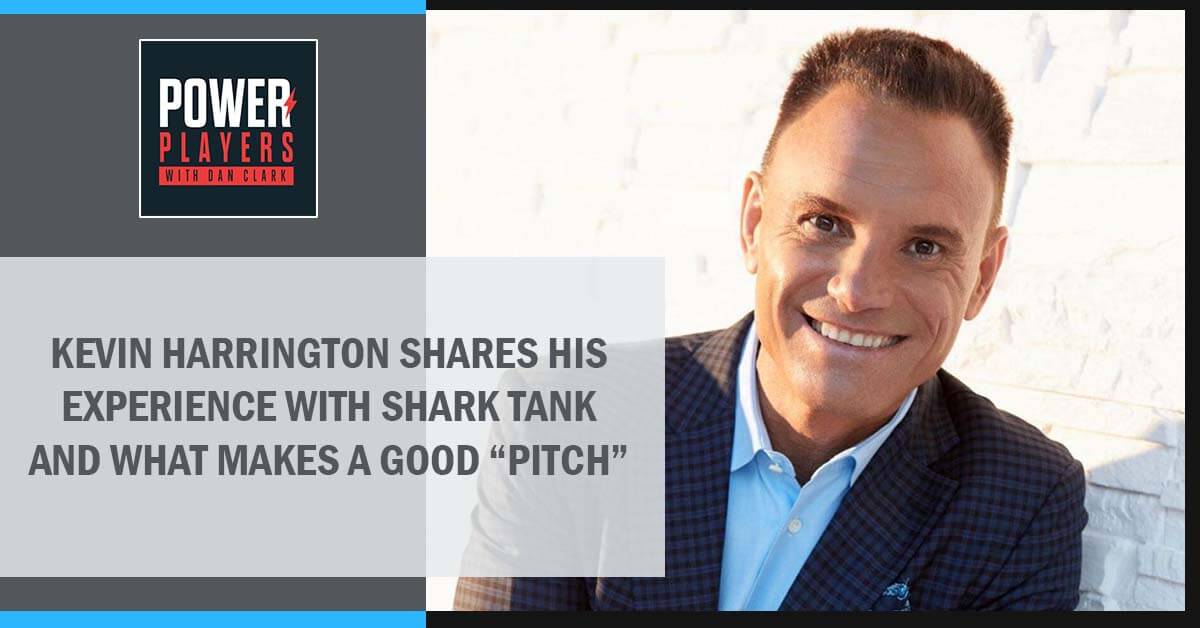
How do you make a good pitch stand out? In today’s world, many doors and avenues have opened to showcase innovations and enterprises for the benefit of startup owners and investors alike. Kevin Harrington, one of the original Sharks on the blockbuster investing TV Show, Shark Tank, sits with Dan Clark in this episode to talk about his life and stories from the countless companies he has invested in. From Fortune 100 companies to startups, Kevin has helped companies of all sizes grow and scale their business. Listen in as Kevin gives us the insider info on what makes a great “pitch” and how he has made millions on ideas that have translated into changing millions of lives for the better.
—
Kevin Harrington Shares His Experience With Shark Tank And What Makes A Good “Pitch”
This is an interview with one of the original sharks on Shark Tank, Kevin Harrington. Welcome to the show. Thanks for spending some time with me. In this episode, Kevin Harrington, who helped conceive and participate as one of the original sharks on the blockbuster TV show, Shark Tank, shares his life and stories from the countless companies he has invested in, giving us the insider info on what makes a great pitch and how he has made millions on ideas that have translated into changing millions of lives for the better.
—
Let’s go right to Kevin with a million-dollar smile.
That’s historic. I need you for every introduction, Dan. Thank you.
I’ve been on the stage with you a few times and in the audience. I’m a curious individual about the power and significance of communication. You ignite and trigger passion in others by answering, “I can do this too.” I want to take you back to when you became that gazillionaire as a five-year-old and all the women in the neighborhood wanted to have an arranged marriage with their daughters as they grew older. You’ve been an entrepreneur your whole life. Take us back to when you discovered that was your passion. Entrepreneurship maybe is not necessarily taught. It’s cultivated.
On 6 kids, I’m the 4th. My dad was a bartender. One day, he said, “I’ve saved up enough money to open my bar.” He opened up Harrington’s Irish Pub. He wanted to have his own business. I started at eleven years old working side by side with my dad, bar-back in the bar, served in bar-backing services, waiting tables and doing everything. After a couple of years at $1 an hour, I worked some 40-hour weeks. There were no child labor laws back then to protect all of us but I enjoyed it. I was having fun.
I said, “Dad, when can I start making some real money? You own this place. You’re doing well.” He said, “You got to start your own business.” He mentored me and I have a lot of great beliefs in mentorship. I’ll talk a little bit about a new book I’ve got about mentoring. He mentored me to start my own business. I went out and said, “What can I do in the summertime to make some money?”
During school, it’s hard to work while you’re going to sixth grade. On the weekends, I was sealing driveways in Ohio, blacktop, asphalt and beautifying the driveways, knocking on doors, showing before and after pictures. “See the guy across the street. Look what his driveway looked like before. Go take a look at it.” “When can you do mine?” I’d pick up $18 in the neighborhood and I’m 15 years old. I had to buy a truck that I couldn’t drive because I didn’t have a license and paid somebody to drive me around.
Don’t worry so much about trying to give somebody a deal. Give them value.
That worked for years while I was through high school. When I got to college, my dad said, “You need to pay for your college, school, tuition, books, boarding, insurance, cars, everything.” That’s a lot of money for an eighteen-year-old kid. I couldn’t do it sealing driveways because it wasn’t year-round. It was only in the summer. I said, “What’s year-round?” It was heating and air conditioning. I started a heating and air conditioning company. I got leads from the courthouse of people that bought a new house.
First of all, they got good credit. They closed on their house, the most expensive thing they’re going to buy. They don’t have central air conditioning. “We’ll send the guy out and give you a quote.” We also said, “Don’t turn that dangerous furnace on. If you don’t know how to work it, it could be dangerous. We’ll come out, do a safety check and show you how to operate your furnace in your air conditioning system.”
We picked up dozen-plus new clients every week while going to college. By my second year, I had 25 employees, 6 trucks and $5 million a year in sales. This is back in the ‘70s. I was making money but I wasn’t happy with the business I was in. It was constrained to Cincinnati. I wasn’t going to be putting furnaces in Cleveland, Ohio, five hours away.
I sold that business to one of my employees and decided until I find something that I want, I’m going to be like a consultant. I’ll help people get started in the business. I’ll broker. I got an actual brokerage license to start selling businesses. I opened up something called a small business center, a one-stop center. WeWork‘s leased a whole floor and rented it out to anybody.
I leased a whole floor in Cincinnati, Ohio, in 1980. This is years ago. I leased it to Synergistic Service providers, an accountant, a lawyer, an advertising and graphic guy, people that could help small business owners. I was making a positive cashflow on the rent that I was getting. I was helping these businesses launch. They were utilizing the services of the small business center.
Entrepreneur magazine heard about this. They said, “Let’s do this together.” We partnered 50/50. We opened 30 of these all before infomercials. I was making money. I’ve got cable television and bought a new house. I will never forget in the early ‘80s where I was watching TV. I ordered cable TV with 30 channels. I get ESPN, 24 hours of sports, HBO, 24 hours of movies, MTV music.
I get to channel 30. There’s nothing there. It was called the Discovery Channel, which is a big channel but its launch was back in the early ‘80s. They didn’t have a budget for 24 hours a day, only 18 hours. That’s where I came up with the idea to fill that six-hour block with products. I went down, talked to Discovery locally in Cincinnati and tested it.
We were getting a huge sale. Products were going through the roof. We were doing kitchen products, Ginsu knives, food saver, Tony Little fitness, Jack LaLanne and the juicer, the Kardashians’, the Hiltons’, the Jenners’, fitness products, kitchen products, beauty, lip plumpers for Paris Hilton, 50 Cent headphones, we sell those, QVC HSN, you name it.
We went public on the New York Stock Exchange and built a $500 million business. We had a great time doing it. That’s when I got the phone call from Mark Burnett, who said, “I need someone like you to take some pitches on Shark Tank.” When I first heard it, I said, “I know what you do to those people on that Survivor show. What are you going to do to me on Shark Tank? I don’t think I like this.”
When we start talking about preparation, you hit the nail on the head and the ball out of the park. Let’s shift so you can answer. “Can I do it too?” When someone is on Shark Tank and someone tunes into an infomercial, tell us the behind-the-scenes mindset that you perfected. Give us some secret sauce of how you can teach us to take an idea and turn it into reality.
I had six hours a day on Discovery under a multi-year contract. We were doing it in 30-minute increments. We did 3-minute, 5-minute, 15-minute, 30-minute, 1-minute and 2-minutes. During a six-hour block, we could run hundreds of products. In the beginning, a 30-minute show is 3, 10-minute pods. Every 10 minutes, we did 3 things, tease, please and seize.
We teased them with some attention-getting problems. We pleased them by solving the problem using demonstrations, magical transformations and testimonials. We seized by giving them an irresistible offer and a call to action. If you watch an infomercial, you’ll generally see three CTAs, Calls To Action. First ten minutes, call to action. Next ten minutes, call to action. Each one is standalone with a tease, please, seize because not everybody can watch all 30 minutes. You have to give some people the same content across the board.
Ultimately, it can’t be a 10-minute segment run 3 times. It’s got to be different. Otherwise, the viewer won’t tune in and watch. That’s the formula. I love to talk about that tease, please, seize because it works on pitching on Shark Tank too. It’s not just selling a product. If you’re going to learn how to pitch, you also want to follow a similar path.
What is one of the most interesting products that someone brought to you that you had to dig deeper than ever before to become created in your advice and mentoring on how they could take that product to market?
The definition of sales is the transference of trust.
As the price point gets higher on products, gets tougher to sell. When the people brought me the original food saver, they set this on my desk and demonstrated it. You’re familiar with the vacuum food sealer. With this vacuum food sealer, I said, “What does this cost?” They said, “It sells for $300.” I said, “We’re going to have to do unbelievable demonstrations.”
If you’ve ever seen a food saver, you put a Coca-Cola can in the bag and it crushes the bag. When you do that, people say to me, “Why do you show that demo?” People don’t buy this to crush cans. I’m like, “We show that to show you the power of the product.” One time, we were selling an item called the Flavorwave infrared oven.
We showed where this product could take something out of the freezer. It’s rock solid. We’d hit it on the side of the kitchen table. It would sound like a board and then we’d stick it into the Flavorwave. Thirty minutes later, it came out succulent, moist, charred on the outside and gorgeous. It is cooked at speeds as fast as a microwave but with oven quality.
When we demonstrated this, we said, “How do we demonstrate going from frozen to beautiful?” We took 2 turkeys, put them in a cryogenic freezer down to 300 and minus 330 degrees. We brought them out. We said, “These things are so frozen. We’re going to put one of them in the flavor wave, come back in a minute and see what happens. Let’s take the other one here and go up the top of a 50-foot building, drop it and see what happens.” The turkey broke like a piece of glass because it was cryogenically frozen.
By the time we got back doing that, the turkey in the Flavorwave was so moist, succulent and golden brown. We said, “You don’t need any other appliance.” If you’ve got weird circumstances at your house, we’re going to be able to make this product work whether it’s minus 300, minus 30 or it’s in the refrigerator overnight.
We came up with these amazing demos with Ginsu. We were cutting through Coca-Cola cans, hammerheads and things like that. We were always looking to focus on amazing, creative money shots, magical transformations, whatever you want to say. This was part of the creative juices of putting these products.
Think about what Kevin taught us. If the price becomes the topic of conversation, it means the presentation is weak and the relationship is nonexistent. Kevin, you’re saying, “Don’t worry so much about trying to give somebody a deal. Give them value.”
We can sell things at a high price. The Tony Little Gazelle was $400 to $500. That went first on Home Shopping Network with 90% women. Are they interested in a $500 fitness machine? We made it worth their while the way we demonstrated it. When we put that inside the studio, we brought some seniors on and women playing with it, having fun, getting the music going. We made it a fun way to exercise. That product ended up being a billion-dollar product. Tony Little is back on a commercial. You’ll see a nationwide for Cricket Wireless. He’s been on GEICO. He built a multibillion-dollar brand starting with our infomercials.
Let me ask a question. The definition of sales is the transference of trust. Teach us about the difference between hiring a very visible celebrity or Joe or Jill man, woman on the street. What’s that strategy?
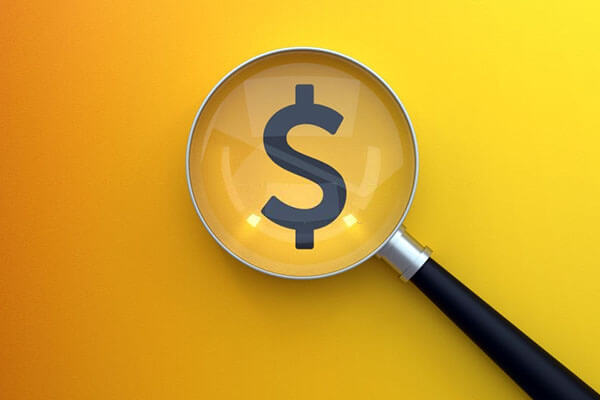
Good Pitch: If the price becomes the topic of conversation, the presentation is weak and the relationship is nonexistent.
I deal with a lot of celebrities. If they are truly in love with their product and have a passion for it, they’re going to be the best salesperson. 50 Cent had these headphones that were wirelessly working and developed some of the technology. He loved and pitched them. People believed in them. They were $400 when they first came out but we did tens of millions of dollars selling headphones.
Billy Mays is a good example. Nobody knew Billy Mays. He had a nice black beard but he was a great pitch guy. We could put Billy Mays on a product. We could also bring on a celebrity. Billy would outsell the celebrity because he was great and a good salesman. He had credibility with the common person. He could relate to them because he was a common guy.
We hired Joan Collins from the old show Dynasty to do a beauty product. She showed up the day of the shoot and said, “I’m not going to say anything.” She collected her $50,000, cashed the check, then showed up and said, “The script you sent is unacceptable. I’m not going to say any of that stuff. You didn’t pay me enough money to say the things you want me to say.” We scrubbed the whole deal, gave her a $50,000 and said goodbye.
We’re like, “We’re not going to keep going down a bad path. Not celebrity is necessarily a great thing.” I’m not going to say Joan Collins isn’t a good presenter because I don’t want to get into that battle but I’m going to say that not every deal has a place for a celebrity. We want celebrities that love the product with passion.
Let’s start winding down. I want to shift to your most amazing reputation behind your back. You’re the consummate mentor. You can go where someone is physically, emotionally and intellectually. Not just trigger our passion, creativity and imagination but you have that ability to take us to the next level. I want my readers to understand the metaphor here. You’ve been the ultimate entrepreneur pitchman who can take a product from what it is, create it into something larger than life and get people to buy it.
The metaphor is a human being is a commodity for this little one-second analogy. You have this ability to take the person, the commodity, the hello and goodbye individual Dan Clark and take us to the next level like you do products and services as an entrepreneur, pitchman and the original shark. Teach us about that. Tell us about this magnificent new book you have, Mentor to Millions. Maybe conclude with a meaningful poem so we’ll remember you.
I told you all the great things that I’ve done and everything. I haven’t told you about the failures or the problems I had getting over these humps. My father was my first mentor. I’ve had a dozen mentors. I sat one-on-one with Richard Branson for a couple of days, picked his brains and got great stuff. He’s a mentor to me.
You could have everything you want in life if you help enough other people get what they want.
When I grew my business, I needed cash way back in the early ‘80s. I had $25,000 when I started with. That didn’t go very far. I had to finance inventory, production and a whole company. I tried to raise capital, went to five banks and got turned down everywhere. I ended up finding an unbelievable mentor. He told me, “I’ll get you money. What do you need? $3 million to $5 million?” “Yes.” “I’ll get you that from one of the banks that turned you down.” He did. I brought on a finance mentor, a legal and operations.
I’m good at marketing and sales. I need help in these other areas. Once I figured out that I could bring mentors on in my business, I then said, “Let me tell other people how they can do that.” This is why I wrote this book called Mentor to Millions. The foreword is by Tom Ziglar, Zig Ziglar’s son. It’s all about how to get mentors in your life, why you need them and where to get them. It is my life of dealing with getting the right mentors and how to utilize them efficiently in the process. I spend almost 75% of my time helping other companies.
I’m on the board of several public companies. One of them went from $0.22 to $3 during COVID. Since COVID, $3 to $15 a share so from $0.22 to $15. This is a board seat that I’ve had for a couple of years but this is what I do. I like to bring a power-player team to the relationships I get involved with. For anybody interested, you can get a sneak peek and some free mentoring away at KevinMentor.com. It is my passion.
Every person that joins EO, Entrepreneurs’ Organization, gets a forum, which is a board of advisors, a board of mentors. I’ve been putting people into mentoring for years. That goes back to 1987. You get a monthly mentoring session for every month that you belong to EO. It’s amazing. People swear by it. I’m one of the cofounders. It’s tough to do it alone. If you’re out there and you’re an entrepreneur, don’t be afraid to ask a mentor. Don’t be afraid to ask me.
I have one last quick story and then I’ll let you finish up, Dan. I’m sitting at an airport coming away from a big event in San Diego, the Traffic & Conversion. Ten thousand people, more or less, are at this event. I’ve been going for three days, nonstop, crazy. I’m sitting in the little restaurant right across from the gate that I’m going to be boarding.
This young man comes over and said, “Mr. Harrington, I’ve been following you for years. I was over at Traffic & Conversion. I have a $100 bill for you because I want to ask you a question but I don’t want anything for free. All I want is an answer to my question. Would you be willing to take me up on my offer?”
I looked at him and was blown away. This is a young kid that happened to have $100 on him. I took the $100, handed it back to him and said, “That’s one of the best ways I’ve ever been pitched before to give somebody some of my time. It was good, so I’m not charging you a dime. I’m going to use this story down the road but fire away. I only got five minutes because I’m going to be boarding in a few minutes here.” We did a little session, maintained a relationship and I emailed him. I mentor this boy. This is what I love. It’s all part of being an entrepreneur for many years. That’s why if you need help, this is where you can get it, KevinMentor.com. Thank you for having me here, Dan.
Back in the day, I was paralyzed playing football. As I started to get better, the vice president of the university gave me a cassette tape to listen to by Zig Ziglar. I thought, “His mom ran out of names.” I plugged it in. He sponsored me in the National Speakers Association and mentored me for over 25 years. I have known Tom, his daughters and Laurie Majors, his right hand.

Good Pitch: Surround yourself with a winning team, a dream team of experts who complement your skillsets, and you’re going to be able to take that ball down and cross the finish line.
To have this connection with you through the Ziglars blows my mind. Randy Pausch, the famous university professor battling cancer, coined the phrase last lecture. Every one of my guests on the show, Kevin, I asked them, “If you had one last lecture and teach the world one final, timeless truth that makes everybody a power player regardless of our generation, race and gender, what’s that one bit of advice that someone can say, ‘I can’t remember the 65 minutes that followed Kevin Harrington’s amazing transformational speech but this one nugget took me to the next level?'” What would it be about?
I don’t know if you remember Paul J. Meyer. I wake up every morning to one of his amazing quotes. “Whatever you vividly imagine, urgently desire, sincerely believe and enthusiastically act upon must inevitably come to pass.” I put that in books. I’m a real firm believer in if you have a passion and desire and you believe it and you act upon it properly, putting a focus on it, you’re going to get whatever you want in life.
Zig Ziglar said that you could have everything in life you want if you help enough other people get what they want. There are a couple of things that I live my life by but this is the ultimate thing that made me the best entrepreneur. When I first started, I was too egotistical. I was knocking on doors and selling like crazy thought I could do it all but you’re paying your taxes, running the books and getting the right people to build the team. I said, “I need to surround myself with the dream team.”
This is the one thing that I say people stop me in airports, “I’m a young entrepreneur. What should I do to be successful?” I’m going to say, “Don’t try to do it all by yourself, especially if it’s your first time. Surround yourself with a winning team, a dream team of experts who complement your skillsets. You’re going to be able to take that ball down and cross the finish line.”
I have three lawyers that are part of my dream team. I got a CFO and amazing digital marketing people. I don’t know how to do all that stuff. I don’t know how to build funnels. I got a team that does. I don’t want to know. I want to keep doing what I do best. You and I should have connected as a dream team a long time ago. We could be rocking and rolling with some companies. We could have some good times and help some people do amazing things.
My guest has been Kevin Harrington. Think about Kevin Harrington, success, catalyst, mentor, extraordinary. Let’s follow him. Let’s join your tribe. I will get that book as soon as I hang up on this interview. Kevin, thank you so much. Remember what Kevin Harrington has reminded us about. The power play is in you if you surround yourself with the right people who can bring it out and team up. Thank you. God bless, Kevin. You’ve inspired me. I can’t wait to see you again.
Dan, me, too. See you hopefully sooner than later.
Important Links:
- Kevin Harrington
- WeWork
- Mentor to Millions
- Entrepreneurs’ Organization
- National Speakers Association
About Kevin Harrington
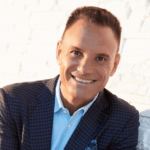 Inventor of the Infomercial, Shark on Shark Tank, Fortune 100 Investor, Philanthropist, Author; Kevin has done it all. Kevin is one of the principal pioneers of the “As Seen On TV” Industry. As the owner of AsSeenOnTV Inc. and AsSeenOnTv.com, Kevin has launched over 1,000 products in over 100 countries in dozens of languages, creating over $6 billion in global sales. As media consumption transitioned to digital, in anticipation of the explosive potential, Kevin sold all of his AsSeenOnTV assets. He then transitioned to digital media and started investing in public and private companies. Kevin now sits on the board of directors for multiple companies and has created over $10 billion in value.
Inventor of the Infomercial, Shark on Shark Tank, Fortune 100 Investor, Philanthropist, Author; Kevin has done it all. Kevin is one of the principal pioneers of the “As Seen On TV” Industry. As the owner of AsSeenOnTV Inc. and AsSeenOnTv.com, Kevin has launched over 1,000 products in over 100 countries in dozens of languages, creating over $6 billion in global sales. As media consumption transitioned to digital, in anticipation of the explosive potential, Kevin sold all of his AsSeenOnTV assets. He then transitioned to digital media and started investing in public and private companies. Kevin now sits on the board of directors for multiple companies and has created over $10 billion in value.
